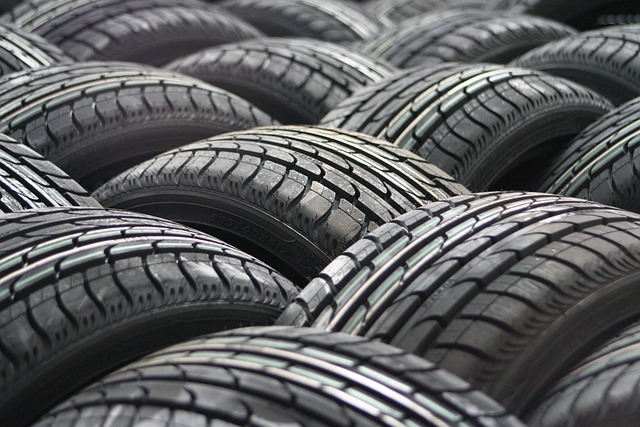Register Car California: Step-by-Step VIN Verification Guide
Registering a car in California involves understanding key requirements and gathering essential documents. First, familiarize yourself with state rules regarding vehicle registration and emissions sta…….

Registering a car in California involves understanding key requirements and gathering essential documents. First, familiarize yourself with state rules regarding vehicle registration and emissions standards. Then, collect necessary paperwork, including proof of ownership and insurance. Next, perform a Vehicle Identification Number (VIN) check to ensure authenticity. You can apply for registration at a DMV office or online. After approval, pay fees and receive your unique license plate. Always remember to conduct thorough VIN verification throughout the process.
- Understand California Car Registration Requirements
- Gather Necessary Documents for VIN Verification
- Perform Vehicle Identification Number (VIN) Check
- Apply for Registration at a DMV Office or Online
- Pay Registration Fees and Receive Your Plate
Understand California Car Registration Requirements

Before registering your car in California, it’s crucial to understand the state’s specific requirements for vehicle registration. California requires all vehicles operated on public roads to be properly registered with the Department of Motor Vehicles (DMV). This includes completing necessary paperwork and passing a series of inspections to ensure roadworthiness. One critical aspect is the verification of the Vehicle Identification Number (VIN), which serves as a unique identifier for your car. This process, often done through a mobile vin verifier or mobile vin verification, ensures that the vehicle matches the details provided on the registration documents.
During the registration process, you’ll need to present valid documentation, such as proof of ownership and identification. Additionally, a safety inspection may be required to check various components of your vehicle, including lights, brakes, tires, and emissions systems. It’s essential to ensure that your car meets all these criteria to avoid any delays or issues with the registration process.
Gather Necessary Documents for VIN Verification

Before registering your car in California, you’ll need to ensure you have all the required documents for a successful VIN verification. This process involves validating the vehicle’s unique identification number (VIN) and its overall authenticity. Start by gathering essential paperwork such as the title, registration certificate, and proof of insurance. Additionally, obtain a valid driver’s license or state-issued ID card to ensure you meet the necessary requirements.
For a convenient and efficient vin inspection, consider using a mobile vin verifier. These services allow you to complete the verification process right from your location by providing accurate and up-to-date data on the vehicle’s history, ensuring that your car is safe and legal for California roads.
Perform Vehicle Identification Number (VIN) Check

Before registering your car in California, performing a Vehicle Identification Number (VIN) check is a crucial step. This process involves verifying the vehicle’s history and ensuring it meets all legal standards. A VIN verification helps uncover any hidden issues or discrepancies related to the car’s ownership, accident records, or odometer rollback. In California, you can conduct this inspection through various methods, including using a mobile vin verifier or conducting the check at a designated location.
A mobile vin inspection is convenient, allowing you to complete the process from the comfort of your home or nearby parking lot. Alternatively, you can visit an official location for a vin inspection. Either way, having a reliable and accurate vin verification is essential in ensuring a smooth registration process and providing peace of mind when purchasing a used vehicle.
Apply for Registration at a DMV Office or Online

Applying for car registration in California can be done at a DMV office or online, both offering convenient options for vehicle owners. If visiting a physical location, you’ll need to bring your vehicle and its necessary documents, such as proof of ownership and insurance. A key step before registration is VIN verification, which ensures the vehicle’s identification number (VIN) is accurate and matches the vehicle’s details. You can facilitate this process with a mobile vin verifier, making it easier than ever to complete your registration requirements.
Online registration involves submitting an application form and uploading digital copies of required documents. After submission, you’ll receive instructions on how to schedule a time for a VIN inspection, which can be conducted by a mobile vin verification service for added convenience. This option is ideal for those with busy schedules or who prefer the efficiency of digital processes.
Pay Registration Fees and Receive Your Plate

After completing your vehicle’s registration application and providing necessary documents, the next step is to pay the registration fees. These fees vary based on the type of vehicle and its age, so be sure to check the California DMV website for the most up-to-date rates. Once the payment is processed, you’ll receive your license plate or plates assigned to your car. This crucial process, known as VIN verification, ensures that your vehicle’s unique identification number (VIN) matches the information in the registration records.
A mobile vin verifier or mobile vin inspection service can be a convenient option for many California residents. These services allow you to complete the VIN verification process at your convenience, often with less hassle and faster turnaround times compared to traditional methods. Having your plates in hand signifies that your car is officially registered and ready to hit the open road, allowing you to enjoy the freedom of driving legally and with peace of mind.
Registering a car in California involves understanding specific requirements, gathering essential documents, and completing a Vehicle Identification Number (VIN) check. By following these steps – from ensuring compliance with state regulations to applying for registration either online or at a DMV office – you’ll be well on your way to securing your vehicle’s title and license plates. Remember, a successful VIN verification is key to navigating this process smoothly, so make sure all information is accurate and up-to-date.







